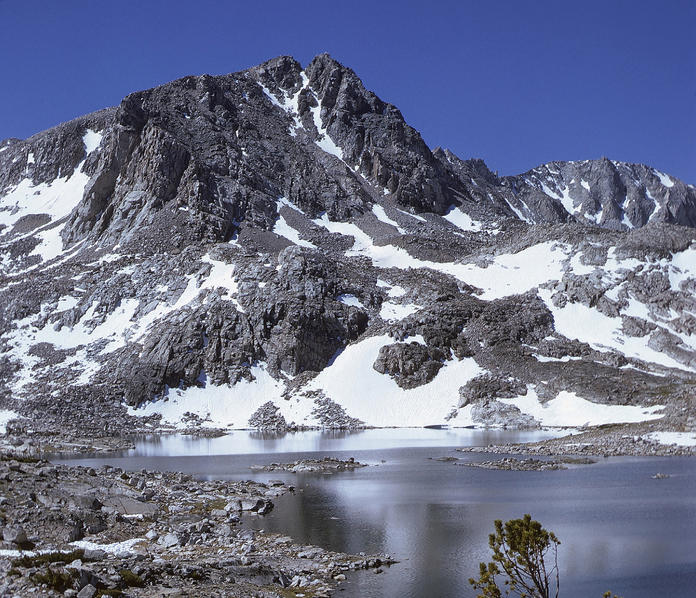Snow-covered mountains make for remarkably efficient reservoirs, storing enormous amounts of precipitation in the winter and then releasing it gradually as meltwater in the spring and summer, precisely when people at lower altitudes need it for irrigating crops. But with snowfall levels expected to decrease in many parts of the world as a result of climate change, how will the global water supply be affected?
A team of scientists led by Columbia’s Justin Mankin ’04GS, ’10SIPA recently set out to answer this question, and what they discovered is alarming. At least two billion people, they conclude, live in regions that are likely to experience much drier springs and summers by the end of this century as a result of nearby mountain ranges accumulating less snow in winter months. The regions likely to be affected include Northern and Central California, where millions of people now depend on meltwater from the Sierra Nevada, Klamath, and Northern Coast Mountains; a large swath of the American Southwest and northern Mexico, where millions more rely on runoff from the Rocky Mountains; and vast stretches of Iran, Syria, and Iraq that receive meltwater from the Zagros Mountains. Also likely to be affected are parts of Portugal, Spain, and France located below the Cantabrian and Pyrenees Mountains; a section of Northern Africa now kept verdant by snow melting off Morocco’s Atlas Mountains; and parts of Italy, the Balkans, and Central Asia that depend on meltwater from surrounding highlands.
“Mountains in these areas are likely to receive more of their winter precipitation as rain, which will wash away,” says Mankin, a postdoctoral fellow at Columbia’s Earth Institute. “The snow that does fall will melt earlier in the year.”
The new Columbia study is the first to assess the risks posed by diminished snowfall across the entire Northern Hemisphere, which receives most of the planet’s snow. Mankin and his colleagues, who include fellow Columbia postdoc Deepti Singh and researchers from the University of Zurich, the University of Twente in the Netherlands, and Stanford, examined a total of 421 mountain drainage basins on four continents and considered how their conditions might change over the next century, based on multiple climate models. They then analyzed present demographics and water-use patterns to identify ninety-seven drainage basins in which people run at least a two-thirds chance of experiencing serious water shortages in the future.
“Our goal was to assess the human impact of reduced snowfall,” says Mankin. “So we looked to see which drainage basins are both densely populated and likely to get drier.”
Interestingly, the researchers identified several drainage basins, including those along China’s Yellow River and India’s Indus and Ganges Rivers, where losses of meltwater over the next century are likely to be offset by heavier summer rains as temperatures rise. Mankin’s previous research also suggests that melting glaciers are likely to increase water supplies, at least temporarily, in some parts of the world. This is true, for instance, in parts of Uzbekistan and Kazakhstan near the Pamir and Tian Shan Mountains, where some of the world’s largest glaciers are rapidly retreating.
“All of these outcomes are consistent with global warming,” says Mankin, whose latest paper appeared in the journal Environmental Research Letters. “The hydrological cycle is very complex, so you wouldn’t expect changes in seasonal snowfall to have a direct, predictive relationship with water supplies in every drainage basin. But that is why our study is useful: it identifies those areas where the most likely result of reduced snowfall is water stress.”
Mankin hopes that his research will inform public discussion about how regions vulnerable to shrinking snowpacks might update their water-management strategies. “Water managers in many places need to prepare for a world where the snow reservoir no longer exists,” he says. “Should they expand their manmade reservoirs? Should they invest in more efficient irrigation methods or switch to less water-intensive crops? These are expensive investments, and they require long-term planning that’s grounded in robust estimates of the range of outcomes that could result from global warming.”



